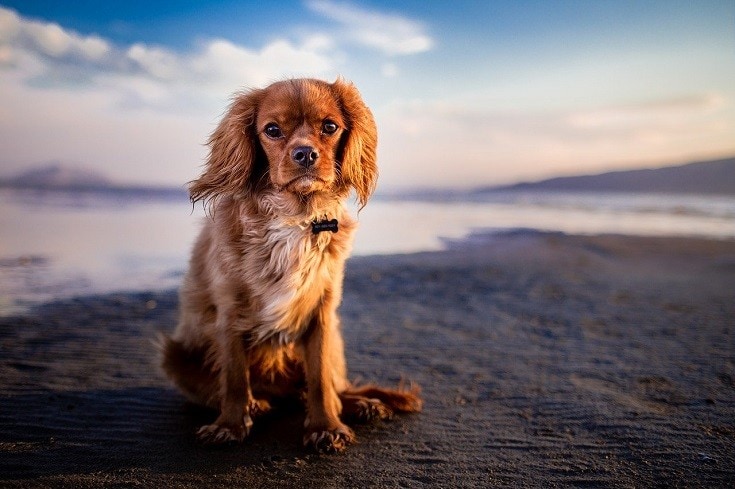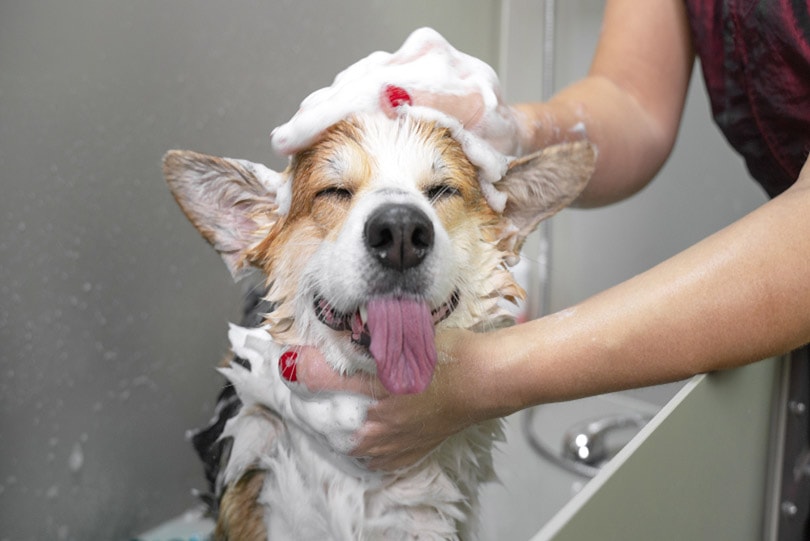Cane Corso vs Neapolitan Mastiff: Key Differences (With Pictures)
By Lorre Luther
Updated on
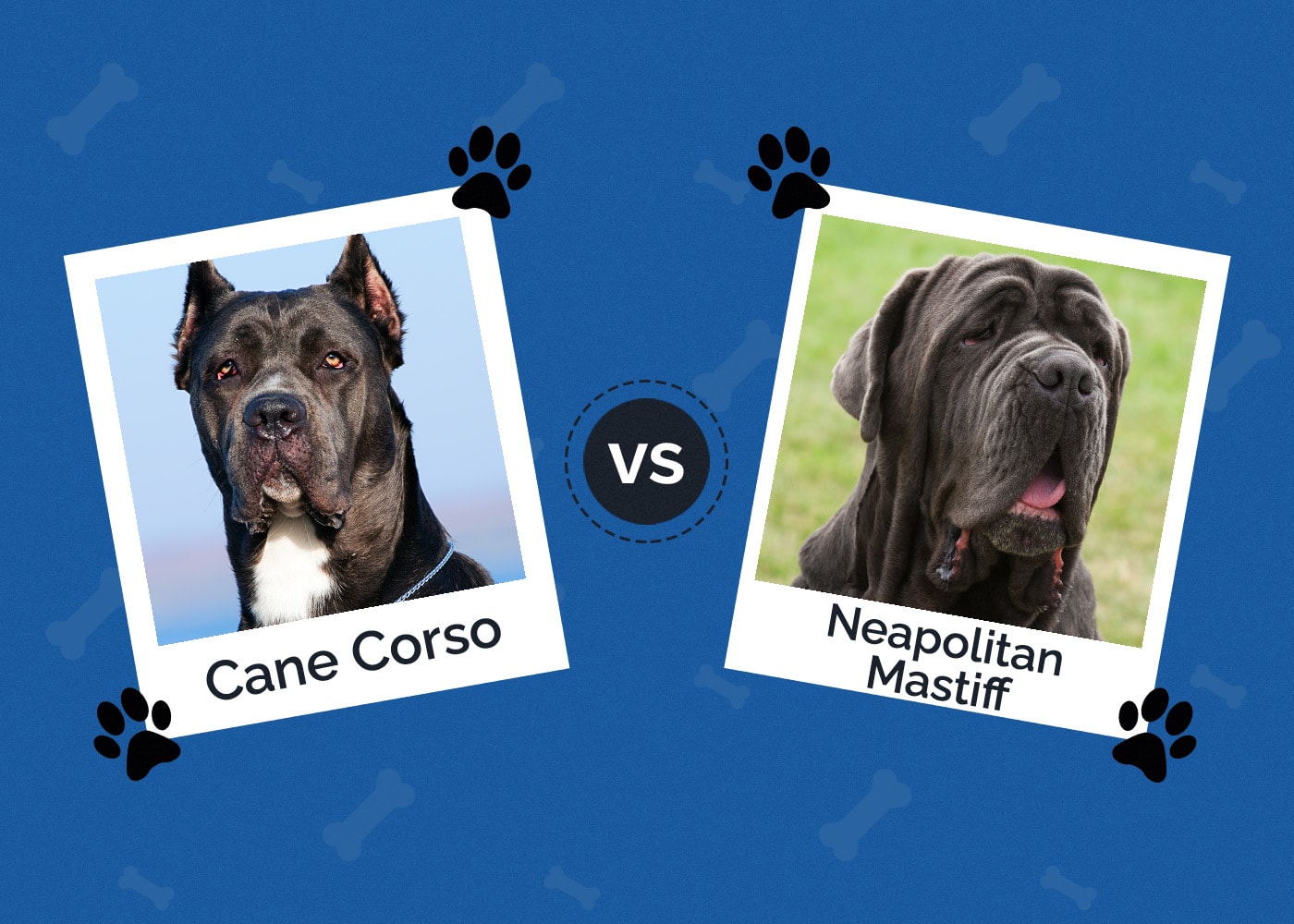
While Cane Corsi and Neapolitan Mastiffs share a similar heritage, they’re quite different dogs! Cane Corsi, while quite large, are much smaller than giant Neapolitan Mastiffs, who can easily weigh more than 150 pounds! Both have guard dog heritage, so they share a tendency to be protective. Cane Corsi are often more energetic and aggressive than Neapolitan Mastiffs.
Both bond deeply with their favorite humans, but Neapolitan Mastiffs are known for their extreme gentleness with loved ones. Neither of these breeds requires a ton of grooming, but Cane Corsi often need a bit of extra brushing during shedding season, and Neapolitan Mastiffs are serious droolers! The breeds also differ in energy levels and exercise requirements.
Cane Corsi require far more activity than Neapolitan Mastiffs. Both are smart but tend to be willful, making consistent, early training essential. Because of their size and protective tendencies, Cane Corsi and Neapolitan Mastiffs usually do best with experienced dog owners.
Visual Differences
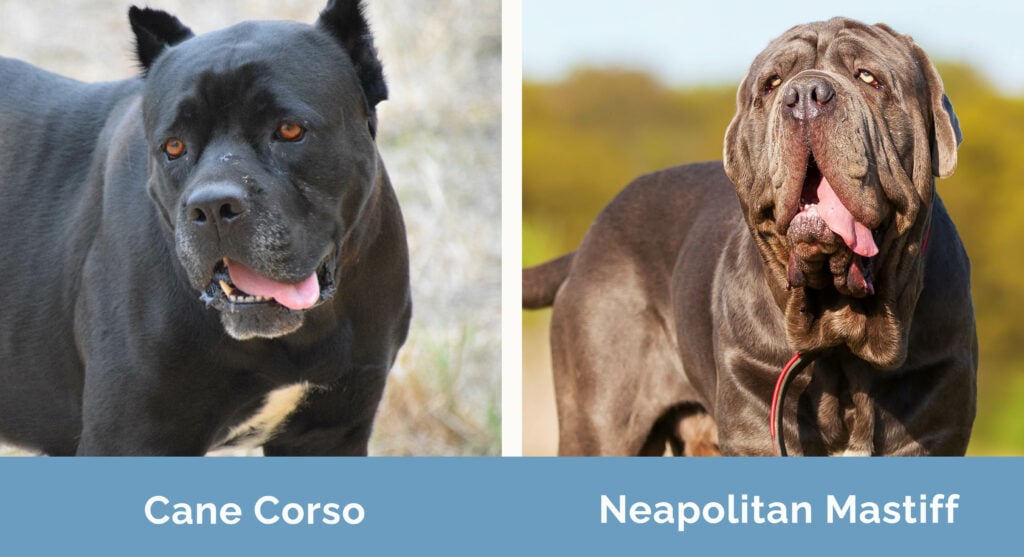
At a Glance
- Average height (adult): 23–27½ inches
- Average weight (adult): 88–10 pounds
- Lifespan: Under 10 years
- Exercise: 1–2 hours a day
- Grooming needs: Moderate
- Family-friendly: Sometimes
- Other pet-friendly: Sometimes
- Trainability: Very trainable but can be willful
- Average height (adult): 24–31 inches
- Average weight (adult): 110–150 pounds
- Lifespan: 7–9 years
- Exercise: 1 hour
- Grooming needs: Moderate
- Family-friendly: Yes
- Other pet-friendly: Sometimes
- Trainability: Able to learn, yet sometimes stubborn
 Cane Corso Overview
Cane Corso Overview
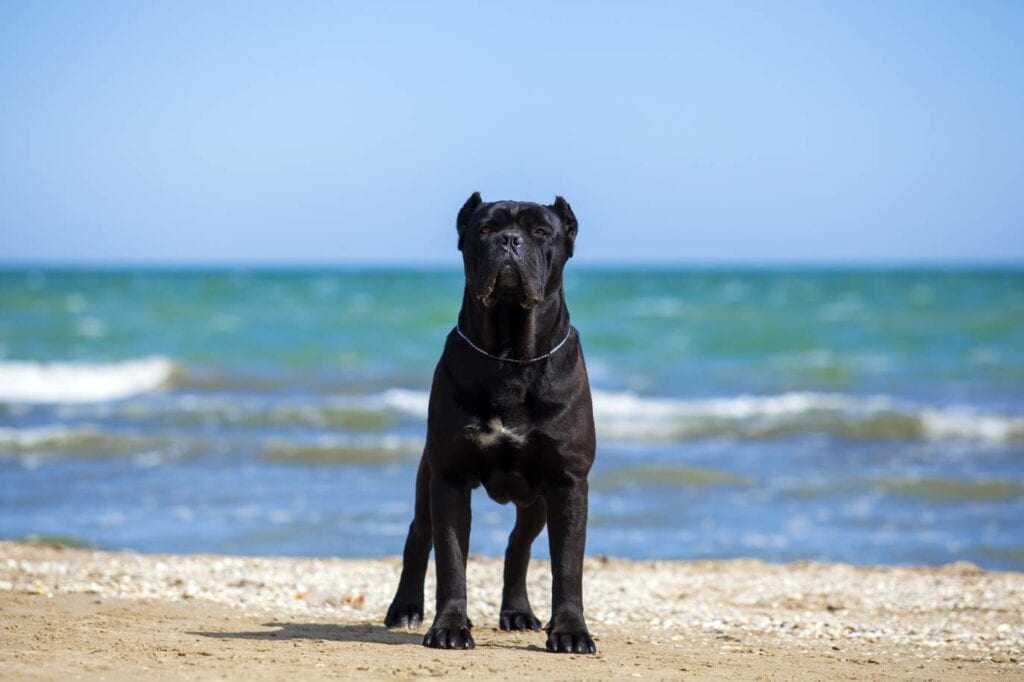
Cane Corsi are gorgeous, confident dogs known for their intelligence and loyalty. They’re incredibly powerful animals, with muscles galore and extremely powerful bites. Cane Corsi generally make good guard dogs since they are protective of their loved ones. They were bred to guard, herd, and hunt, and their temperaments reflect this heritage; they’re loyal, smart, and assertive.
Personality
Cane Corsi genuinely enjoy spending time with loved human companions and often make fantastic watchdogs. They’re happy to head out on hikes or to curl up on the couch. Well-socialized Cane Corsi can be quite loving and gentle, but because these dogs are naturally protective and assertive, they can become aggressive without appropriate human guidance.
While they require a fair amount of exercise, most are relatively mellow when hanging out at home and aren’t inclined to get on serious unprovoked barking rolls. They generally dislike being bored, so having lots of toys and mentally stimulating activities like food puzzles can help keep them entertained and happy.
Training
Cane Corsi are working dogs, so they’re often happiest when engaged in tasks that require them to use their natural abilities to solve problems and reach goals. Although they’re incredibly smart and loyal, they’re not always the easiest breed to train, as many can be a bit willful, which can be an issue given how big and powerful these dogs are.
The breed’s dominant temperament can become challenging if they’re not socialized well as puppies. Solid early training increases the likelihood that Cane Corsi will be at ease and well-behaved around children and other animals, like cats. They can be assertive, making them best suited for experienced dog owners. Reward-based training methods work well with these loyal dogs. Studies suggest that punishment-based training often results in increased canine stress, and stressed-out dogs sometimes become aggressive due to fear and anxiety.
Health & Care
While Cane Corsi are relatively healthy, there are some conditions the breed is more likely to develop, including epilepsy, bloat, and certain eye conditions. They’re also susceptible to joint problems, including hip and elbow dysplasia.
Cane Corsi don’t have specific dietary requirements, but most benefit from eating large-dog formulations. And special care needs to be taken when feeding Cane Corsi puppies to ensure they don’t grow too quickly, which can lead to joint and bone problems. Some veterinarians recommend supplementing the Cane Corso’s diet with joint-friendly products such as chondroitin, MSM, and glucosamine to give these large dogs’ joints extra support.
They’re extremely low maintenance in the grooming department. Cane Corsi have short, thick, coarse double coats that usually require weekly brushing. Most benefit from daily brushing during high-shedding periods, and they only require occasional baths. Like all dogs, they need regular at-home dental care and nail trims.

Suitable for:
Cane Corsi are great choices for those searching for loving, protective canine companionship. The breed is most suitable for experienced dog owners who are confident in their canine socialization and training abilities. They are large and energetic, making them best suited for homes with lots of space.
While Cane Corsi can be loving pets, they’re often better off in homes without small children and cats. They also require a great deal of exercise, anywhere from 1 to 2 hours per day, to stay healthy, making Cane Corsi fantastic companions for those who enjoy active outdoor pursuits.
Neapolitan Mastiff Overview
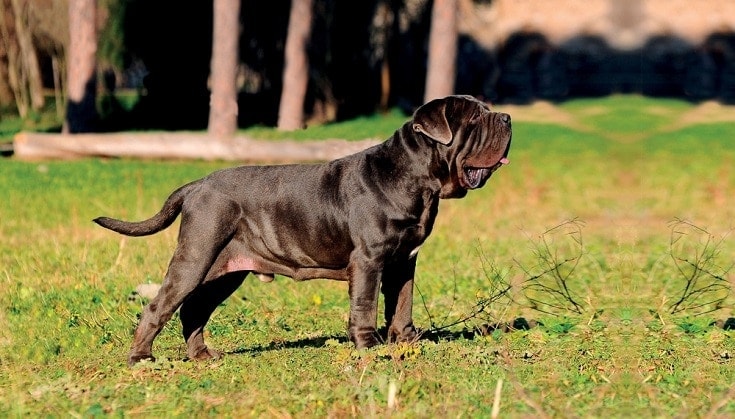
Neapolitan Mastiffs are imposing animals. They create quite an impression with their stature and stunning wrinkles. Originally bred as protectors and guard dogs, Neapolitan Mastiffs make wonderful companion animals who are often extraordinarily gentle with those considered part of their family circle. They tend to be relatively quiet and aren’t generally loud barkers.
Personality
Neapolitan Mastiffs make great family pets and are usually incredibly loyal and deeply devoted to their loved ones. Bred initially as guards and watchdogs, they’re protective of those they love. Some can be a bit standoffish around strangers, but most are welcoming of people their humans accept.
Neapolitan Mastiffs don’t have a ton of energy; they’re usually calm and relaxed when hanging out at home. Most behave with gentle sweetness towards familiar children. But due to their sheer size, Neapolitan Mastiffs can accidentally knock over smaller kids, so they’re often better choices for families with older children.
Training
Neapolitan Mastiffs thrive with consistent, positive, reward-based training. Early training is beneficial with these slightly stubborn dogs. Because they can be a bit tricky to train, Neapolitan Mastiffs aren’t usually considered excellent choices for first-time dog owners.
Because they’re so large and have such strong protective tendencies, Neapolitan Mastiffs require good obedience training to manage and channel their instincts appropriately. While most dogs can be extremely laid back, some can become aggressive toward cats and other dogs without solid early socialization.
Health & Care
Neapolitan Mastiffs are generally healthy for a large, pedigree breed, although they’re at heightened risk of developing certain conditions, such as cherry eye, demodicosis, and cardiomyopathy. Because they’re so large, they often have joint conditions such as hip and elbow dysplasia. The breed is also inclined to suffer from gastric dilatation-volvulus (GDV), or bloat, which is a potentially fatal condition in which a dog’s stomach twists, resulting in a blockage. It often occurs when large dogs with deep chests exercise too soon after eating.
They don’t require excessive exercise, and most are okay with around 1 hour of daily physical activity. Regular morning and evening walks are generally all they need to stay healthy. They often prefer lounging around inside to hitting the great outdoors.
Many veterinarians recommend that giant breed puppies consume dog food developed with their specific needs in mind to ensure they get the right blend of fat and protein for their size and energy levels. Managing youthful growth can reduce the likelihood that these dogs will develop painful joint conditions such as hip dysplasia or osteochondritis dissecans (OCD). Once fully grown, Neapolitan Mastiffs usually do best when fed large or giant breed formulations. Supplementation with joint-supporting options such as glucosamine, chondroitin, and MSM is often recommended.
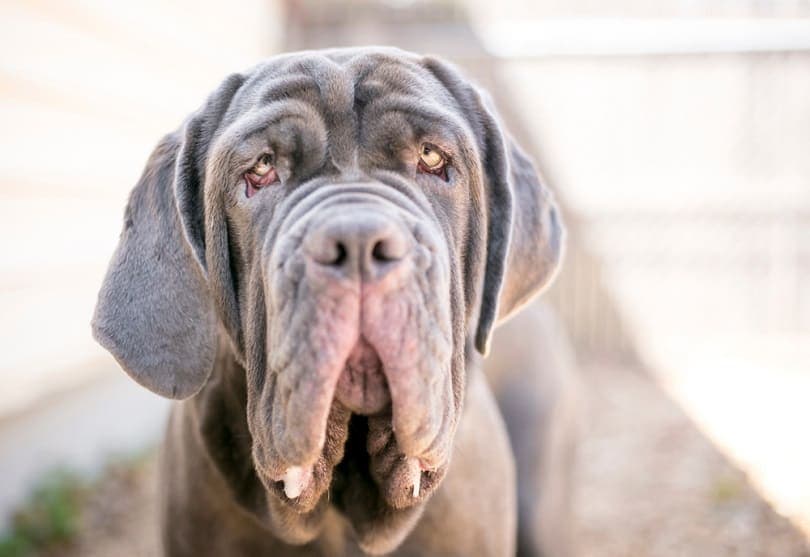
Suitable for:
Neapolitan Mastiffs are huge dogs, so be prepared to spend more on food, treats, and even doggy accessories. Although they’re not terribly active, they often thrive in homes where they have space to comfortably lounge about. Most bond deeply with and can be lovingly protective of those to whom they’re closest. They’re great companions for families that enjoy spending time at home.
Neapolitan Mastiffs often do best with experienced dog owners since they can be a bit stubborn. Owners must clean up after their Mastiffs more than some breeds since they’re prolific droolers, and food tends to end up on the floor when they eat.
Which Breed Is Right for You?
While Cane Corsi and Neapolitan Mastiffs are gorgeous statuesque dogs with great watchdog chops, they’re different physically and temperamentally.
Neapolitan Mastiffs are enormous dogs, and larger dogs are generally more expensive to maintain due to their food requirements. Owning a Neapolitan Mastiff will likely cost more over the lifetime of your pet. Because they’re so big, Neapolitan Mastiffs usually do best in homes where they have sufficient room to lounge around and explore. Cane Corsi, while smaller, require a fair amount of daily activity and are often happiest in homes where they have access to a fenced-in yard.
Neapolitan Mastiffs are generally calmer than Cane Corsi, and they usually require less exercise. Many are perfectly happy with two good daily walks, as they’re not terribly active dogs once full-grown. Cane Corsi have tons of energy and require more heart-pounding daily exercise to stay happy and healthy. They’re great for active people and families looking for a devoted and protective canine companion.
Both breeds typically do best with experienced dog owners since they can be stubborn and inappropriately protective if not well-socialized. Cane Corsi are more aggressive than Neapolitan Mastiffs, although both can be territorial. Early, consistent, reward-based training is critical with both breeds.
Featured Image Credit: (L) Sbolotova, Shutterstock | (R) VKarlov, Shutterstock

 Cane Corso Overview
Cane Corso Overview
